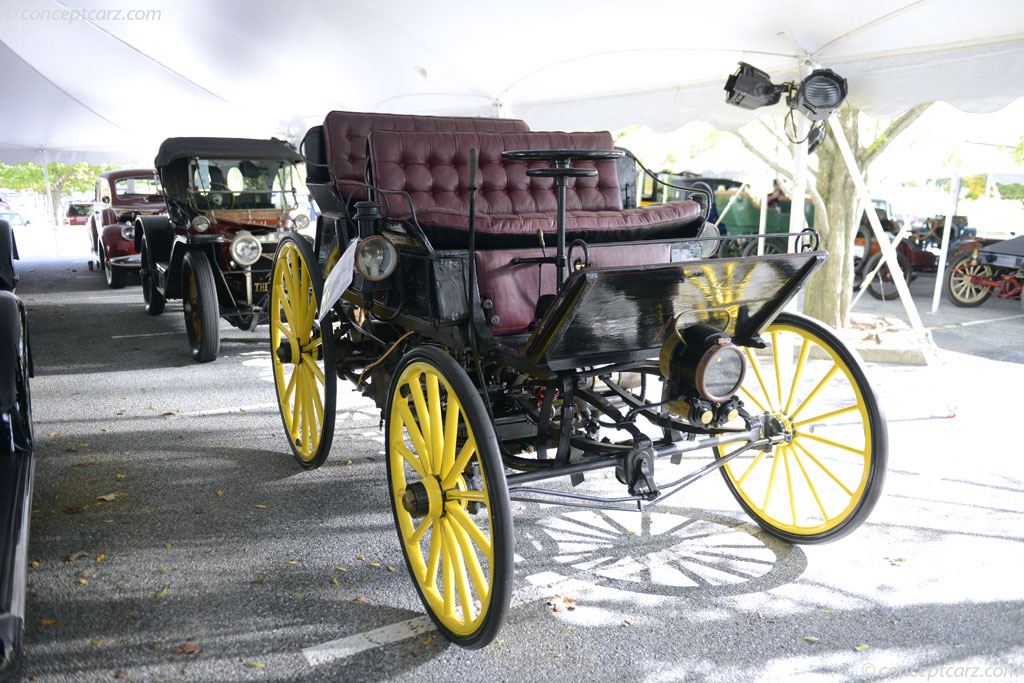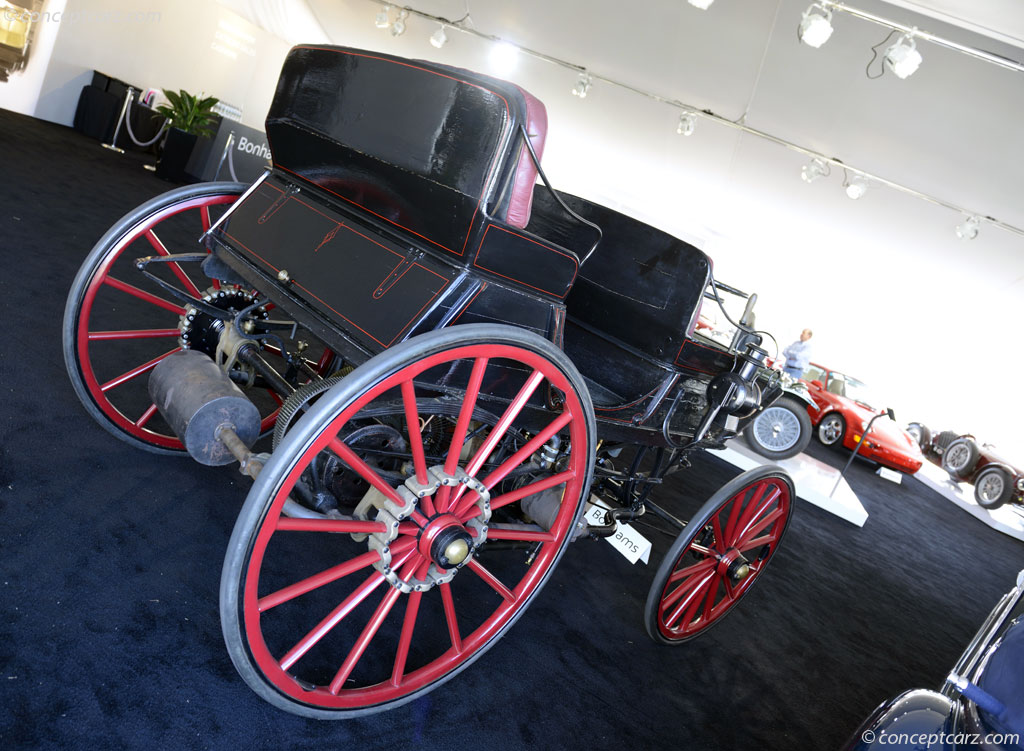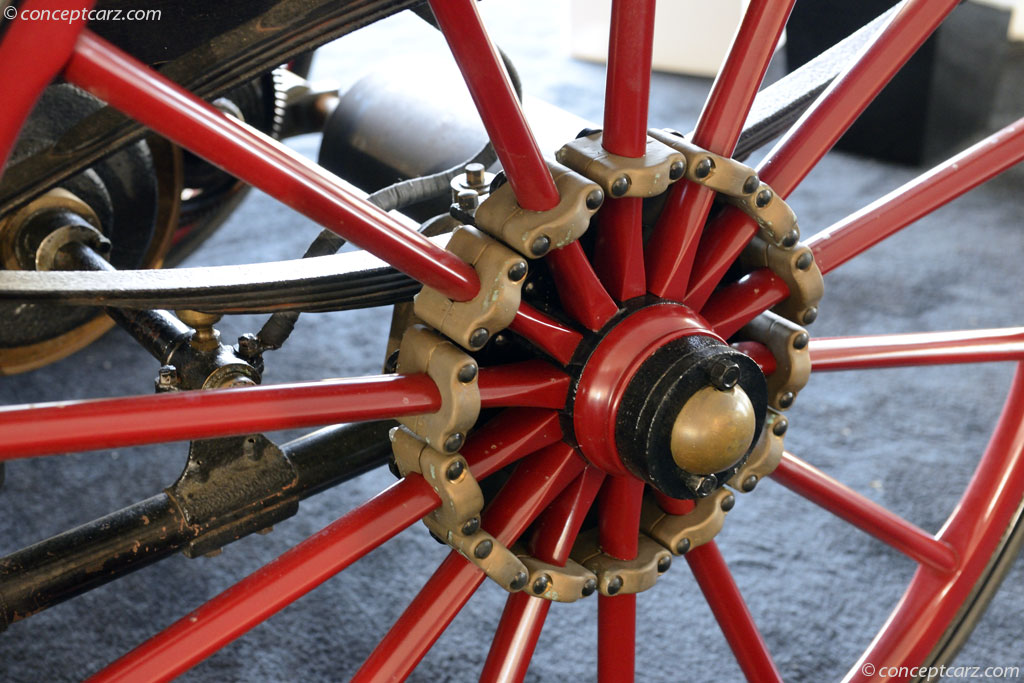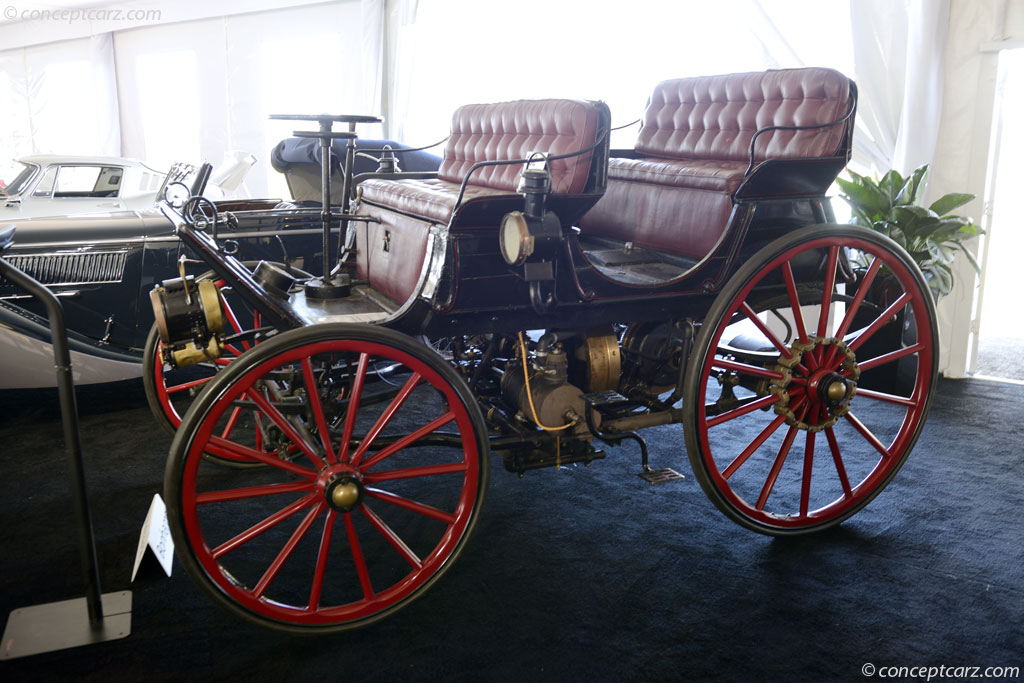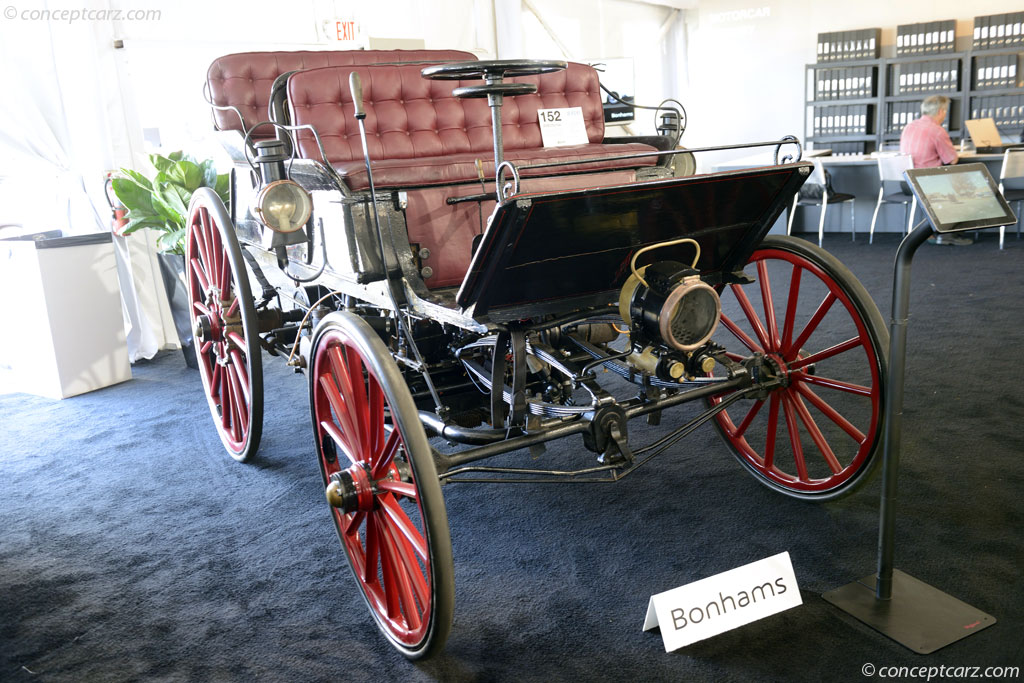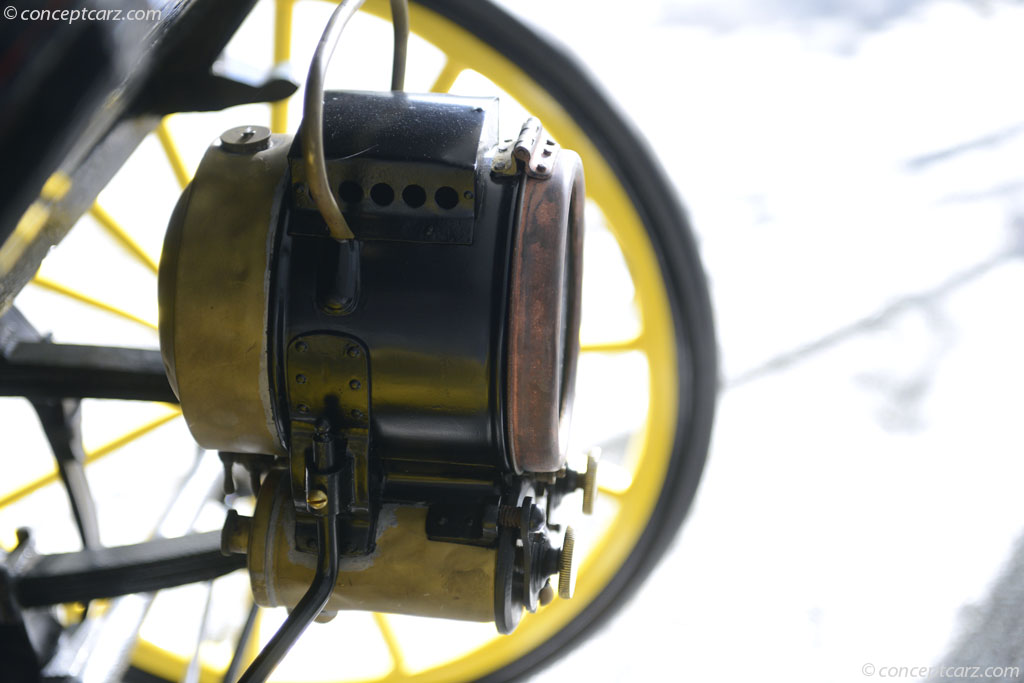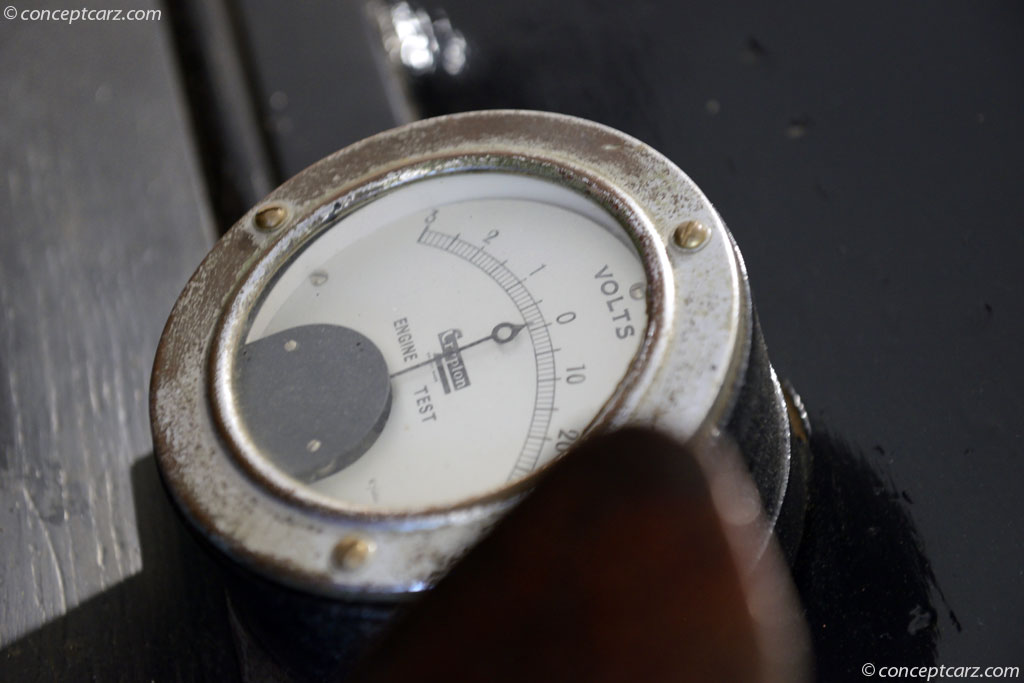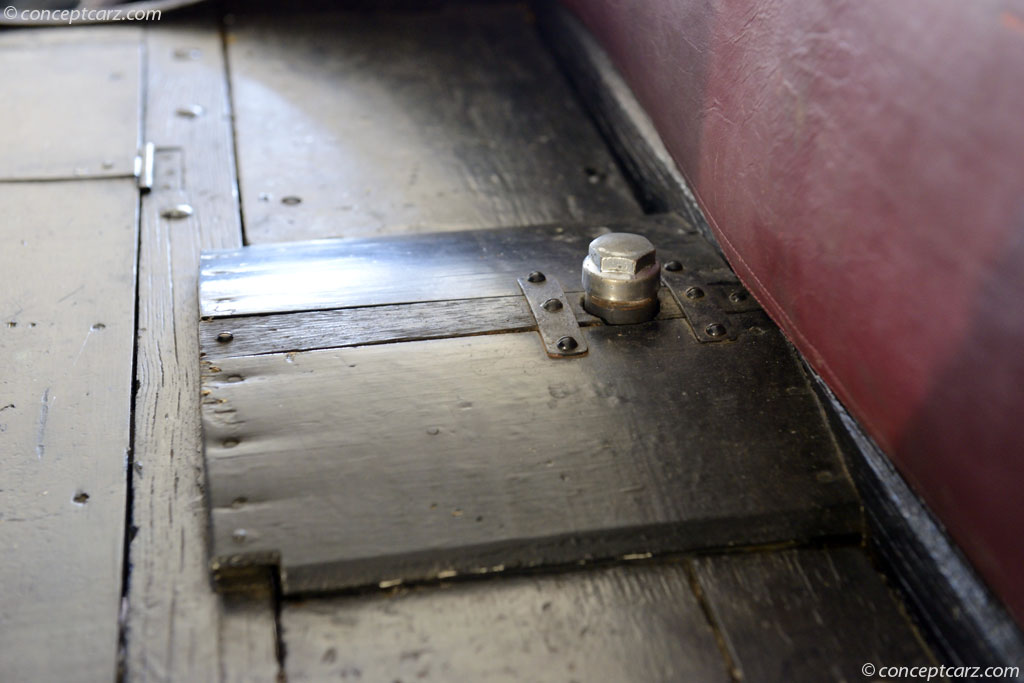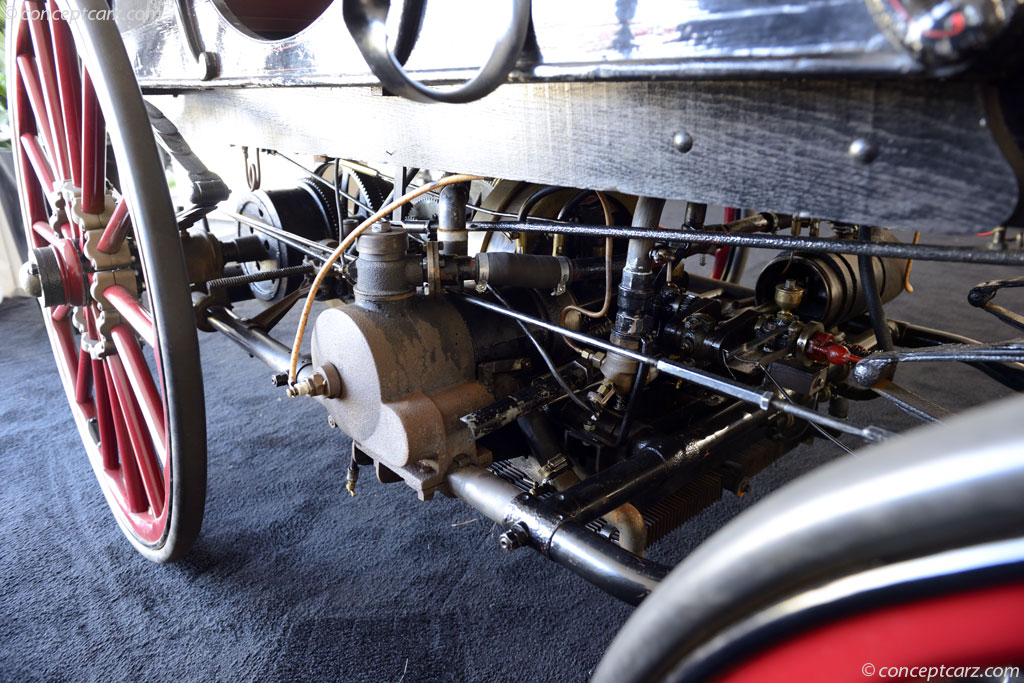Image credit: © conceptcarz.com (Reproduction Or reuse prohibited).
In this day and age of the automobile, it is nearly impossible to conceive of a time when serious consideration and efforts were taken to force drivers of early 'self-propelled' vehicles to have a passenger walk in front of the automobile to announce its coming to warn people and livestock. There are always challenges great inventions or inventors have to overcome to achieve their aim. One of those early giants forced to overcome the fear of people would be Armstrong Manufacturing Company.
In spite of the efforts of politicians looking to assuage voters' fears, these 'Red Flag' laws would be resisted, but still enacted in many respects. Armstrong Manufacturing Company would be forced to deal with these now ridiculous laws.
Beginning in 1870, Armstrong Manufacturing would first be known as Armstrong & House Co. Like many others of its day, Armstrong would be known for its production of parts and accessories for the horse-drawn carriage industry. Adjustable stocks would be just one of the many horse-related parts the company built. However, the company would be widely diversified. This would be demonstrated through the construction of tools for water, gas, and steam trades. This do-it-all manufacturer didn't necessarily seem like one that would get into the production of early horseless carriages. Nonetheless, between, what is believed to be 1894 and 1896, Armstrong would do just that.
Amidst great fear over these rattling contraptions, Armstrong Manufacturing Company would take its stab at the production of automobiles. Utilizing an air-cooled two-cylinder engine, Armstrong would begin construction of its automobiles, like the Phaeton. Chassis LX1 would be built to demonstrate Armstrong's intentions in the new automobile industry. But what is really interesting about this particular chassis is its history. LX1 would not be just another chassis. It would be Armstrong's prototype, the very first.
The Phaeton's history would seemingly begin with its discovery in Capewell Manufacturing Company's plant. Capewell would take over the same plant in Bridgeport, Connecticut that Armstrong had occupied until 1950. Among the 19th century, bicycles found would be a horseless carriage.
Through some research, it would be realized this chassis, LX1, had been Armstrong's first and one of just six entrants in a race that ran between Manhattan and the Cosmopolitan offices situated in Irvington, New York. The race was promoted by Cosmopolitan magazine and would be held at a time in which public fear over the new 'automobile' still reigned.
Fears would seem justified as competitors would go trundle down cobblestone streets barely avoiding horse-drawn carriages, cable cars, pedestrians, and even war veterans that had been marching in a parade mere moments before.
Following the participation in the race, LX1 would be returned to the company and used as a demonstrator to try and gin-up interest. Despite sporting such ingenious features as a tubular frame chassis, electric lights, automatic spark control, an electromagnetic starter, and a three-speed magnetic drive, the Armstrong Phaeton would receive a less than exciting reception from the public. Perhaps the spectacle down the streets of Manhattan proved to people just what they feared.
Whatever the reasons, LX1 would be returned to the factory where it would remain until its discovery in 1963. However, upon its discovery, those at Capewell knew not what to do with the historical artifact. Therefore, the car would sit idle for another decade before Capewell's Vice President, Henry White, came along and rediscovered the phaeton.
Soon afterward, the car would be moved to a garage in a nearby Connecticut town where it would stay until the mid-1990s. It would be about 1995 that the Magee brothers would come to know about the Armstrong. Their discovery would be greatly aided by Dennis David, a local historian.
The Magee brothers would keep the horseless carriage as part of their collection until it was delivered to England and its new owner, Robin Loder. Loder happened to be a member of the Veteran Car Club of Great Britain. The Armstrong Phaeton would be an ideal automobile, but it needed some restoration work. Therefore, Loder would turn to Robert Steer to do the job. Considered a foremost restorer of period cars, Steer would navigate the intricate workings of the Armstrong and would bring the car to working order. Following the work the car would be dated by the Veteran Car Club making it eligible for entry in such events as the London to Brighton Veteran Car Run.
Several years ago the Armstrong would be shipped back to the United States where more work would be completed. Fully functioning, the Armstrong Phaeton is, in many respects, a rolling history lesson, and yet, the image of what was to be the future. Armstrong would achieve something remarkable. In an era when fear and trepidation reigned around the existence of the horseless carriage, Armstrong would not only produce a viable example but would show the way to the future well beyond the days that would actually become the present.
In many respects, the red flag rules applied to early automobiles. Such unreliability determined it almost necessary to carry someone to wave a red flag, but not out of warning to others, but out of a need for others to come to aid. The Armstrong Phaeton, on the other hand, would be something else entirely. Certainly fears still existed. However, Armstrong's reliable creation assuaged many a fear with owners. In time, the fears within the hearts of the public would also be assuaged.
The 1896 Armstrong Phaeton would be offered for sale after a number of years with its current owner. The car would be consigned as part of RM Auctions' 2014 Hershey auction. Given its incredible provenance and status within automobile history, the Armstrong Phaeton would be a certainly highlight of the event. Bidding would be spirited when the phaeton made its appearance. When all said and done, the Phaeton would achieve a high bid of $375,000. Unfortunately, this high bid would not prove worth the value. Therefore, sadly, the Phaeton would not sell.By Jeremy McMullen
In spite of the efforts of politicians looking to assuage voters' fears, these 'Red Flag' laws would be resisted, but still enacted in many respects. Armstrong Manufacturing Company would be forced to deal with these now ridiculous laws.
Beginning in 1870, Armstrong Manufacturing would first be known as Armstrong & House Co. Like many others of its day, Armstrong would be known for its production of parts and accessories for the horse-drawn carriage industry. Adjustable stocks would be just one of the many horse-related parts the company built. However, the company would be widely diversified. This would be demonstrated through the construction of tools for water, gas, and steam trades. This do-it-all manufacturer didn't necessarily seem like one that would get into the production of early horseless carriages. Nonetheless, between, what is believed to be 1894 and 1896, Armstrong would do just that.
Amidst great fear over these rattling contraptions, Armstrong Manufacturing Company would take its stab at the production of automobiles. Utilizing an air-cooled two-cylinder engine, Armstrong would begin construction of its automobiles, like the Phaeton. Chassis LX1 would be built to demonstrate Armstrong's intentions in the new automobile industry. But what is really interesting about this particular chassis is its history. LX1 would not be just another chassis. It would be Armstrong's prototype, the very first.
The Phaeton's history would seemingly begin with its discovery in Capewell Manufacturing Company's plant. Capewell would take over the same plant in Bridgeport, Connecticut that Armstrong had occupied until 1950. Among the 19th century, bicycles found would be a horseless carriage.
Through some research, it would be realized this chassis, LX1, had been Armstrong's first and one of just six entrants in a race that ran between Manhattan and the Cosmopolitan offices situated in Irvington, New York. The race was promoted by Cosmopolitan magazine and would be held at a time in which public fear over the new 'automobile' still reigned.
Fears would seem justified as competitors would go trundle down cobblestone streets barely avoiding horse-drawn carriages, cable cars, pedestrians, and even war veterans that had been marching in a parade mere moments before.
Following the participation in the race, LX1 would be returned to the company and used as a demonstrator to try and gin-up interest. Despite sporting such ingenious features as a tubular frame chassis, electric lights, automatic spark control, an electromagnetic starter, and a three-speed magnetic drive, the Armstrong Phaeton would receive a less than exciting reception from the public. Perhaps the spectacle down the streets of Manhattan proved to people just what they feared.
Whatever the reasons, LX1 would be returned to the factory where it would remain until its discovery in 1963. However, upon its discovery, those at Capewell knew not what to do with the historical artifact. Therefore, the car would sit idle for another decade before Capewell's Vice President, Henry White, came along and rediscovered the phaeton.
Soon afterward, the car would be moved to a garage in a nearby Connecticut town where it would stay until the mid-1990s. It would be about 1995 that the Magee brothers would come to know about the Armstrong. Their discovery would be greatly aided by Dennis David, a local historian.
The Magee brothers would keep the horseless carriage as part of their collection until it was delivered to England and its new owner, Robin Loder. Loder happened to be a member of the Veteran Car Club of Great Britain. The Armstrong Phaeton would be an ideal automobile, but it needed some restoration work. Therefore, Loder would turn to Robert Steer to do the job. Considered a foremost restorer of period cars, Steer would navigate the intricate workings of the Armstrong and would bring the car to working order. Following the work the car would be dated by the Veteran Car Club making it eligible for entry in such events as the London to Brighton Veteran Car Run.
Several years ago the Armstrong would be shipped back to the United States where more work would be completed. Fully functioning, the Armstrong Phaeton is, in many respects, a rolling history lesson, and yet, the image of what was to be the future. Armstrong would achieve something remarkable. In an era when fear and trepidation reigned around the existence of the horseless carriage, Armstrong would not only produce a viable example but would show the way to the future well beyond the days that would actually become the present.
In many respects, the red flag rules applied to early automobiles. Such unreliability determined it almost necessary to carry someone to wave a red flag, but not out of warning to others, but out of a need for others to come to aid. The Armstrong Phaeton, on the other hand, would be something else entirely. Certainly fears still existed. However, Armstrong's reliable creation assuaged many a fear with owners. In time, the fears within the hearts of the public would also be assuaged.
The 1896 Armstrong Phaeton would be offered for sale after a number of years with its current owner. The car would be consigned as part of RM Auctions' 2014 Hershey auction. Given its incredible provenance and status within automobile history, the Armstrong Phaeton would be a certainly highlight of the event. Bidding would be spirited when the phaeton made its appearance. When all said and done, the Phaeton would achieve a high bid of $375,000. Unfortunately, this high bid would not prove worth the value. Therefore, sadly, the Phaeton would not sell.By Jeremy McMullen
2016 Bonhams : The Amelia Island Auction
Pre-Auction Estimates :
USD $175,000-USD $275,000
Sale Price :
USD $483,400
2014 RM Auctions - Hershey
Pre-Auction Estimates :
USD $550,000-USD $700,000
High Bid (Lot was not sold)
USD $375,000
Recent Sales of the Armstrong Phaeton
(Data based on Model Year 1896 sales)
| 1896 ARMSTRONG PHAETON GASOLINE ELECTRIC HYBRID Sold for USD$483,400 2016 Bonhams : The Amelia Island Auction |   |
Armstrong Phaetons That Failed To Sell At Auction
1896 Armstrong Phaeton's that have appeared at auction but did not sell.
| Vehicle | Chassis | Event | High Bid | Est. Low | Est. High |
|---|---|---|---|---|---|
| 1896 Armstrong Phaeton | LX1 | 2014 RM Auctions Hershey | $375,000 | $550,000 | $700,000 |
Vehicles With Comparable Market Values
Similar sales to the $483,400 range.
| 2020 Ferrari 488 Pista Coupe Chassis#:ZFF90HLA2L0253126 Sold for $483,500 2024 RM Sothebys : ModaMiami | |
| 1973 Porsche 911 Carrera 2.7 RS Touring Chassis#:9113600440 Sold for $487,301 2024 Bonhams : Les Grandes Marques du Monde a Paris | |
| 1993 Ferrari Mondial t Cabriolet Chassis#:ZFFKC33C000096504 Sold for $483,965 2023 RM Sothebys : London | |
| 1930 Packard 745 Deluxe Eight Roadster Chassis#:181480 Sold for $483,500 2023 Broad Arrow : Monterey Jet Center |   |
| 1963 AC MA-200 Roadster Prototype Chassis#:MA-200 Sold for $482,503 2023 Bonhams : Festival of Speed |   |
| 1957 Dual Ghia Convertible Chassis#:104 Sold for $484,000 2023 Mecum : Kissimmee | |
| 1961 JAGUAR E-TYPE SERIES I 3.8-LITRE ROADSTER Chassis#:875045 Sold for $483,500 2022 Gooding & Company : Pebble Beach | |
| 1956 AC Ace Bristol Roadster Chassis#:BEX135 Sold for $478,895 2022 Bonhams : Les Grandes Marques a Monaco | |
| 1939 Talbot Lago Special T150 C cabriolet usine Chassis#:90063 Sold for $487,111 2022 Artcurial : Retromobile | |
| 1986 Citroën BX 4TC Evolution Chassis#:18 Sold for $485,818 2021 Artcurial : AUTOMOBILES SUR LES CHAMPS | |
| 1973 Porsche 911 Carrera RS 2.7 Touring Chassis#:9113600460 Sold for $485,000 2021 RM Sothebys : Arizona | |
| 1969 Mercury Cougar Convertible XR-7 Chassis#:9F94R549292 Sold for $478,694 2020 Bonhams : The Bond Street Sale | |
| 1993 Jaguar XJ220 Chassis#:SAJJEAEX8AX220686 Sold for $483,500 2020 RM Sothebys : The Elkhart Collection |   |
| 1956 Mercedes-Benz 300 Sc Coupe Chassis#:188.014.5500029 Sold for $485,000 2020 RM Sothebys : Shift/Monterey |   |
| 1966 Superformance Ford GT40 MkII Sold for $484,000 2020 Mecum Auctions : Kissimmee | |
| 1993 Jaguar XJ220 Chassis#:SAJJEAEX8AX220683 Sold for $478,750 2019 RM Sothebys : Abu Dhabi | |
| 1973 Ferrari 365 GTB/4 Daytona Berlinetta by Scaglietti Chassis#:16765 Sold for $484,375 2019 RM Sothebys : Abu Dhabi | |
| 1972 Ferrari Dino 246 GT 'Chairs & Flares' by Scaglietti Chassis#:04970 Sold for $483,500 2019 RM Sothebys : Monterey |   |
| 1955 Mercedes-Benz 300 Sc Coupé Chassis#:188.014.5500003 Sold for $487,049 2019 RM Sothebys : Essen | |
| 1947 Bentley Mark VI Cabriolet by Franay Chassis#:B26BH Sold for $483,500 2019 RM Sothebys : Scottsdale Arizona |   |
1896 Armstrong Phaeton
• Additional valuation insight and sales data• History
• Specifications
• Image gallery
